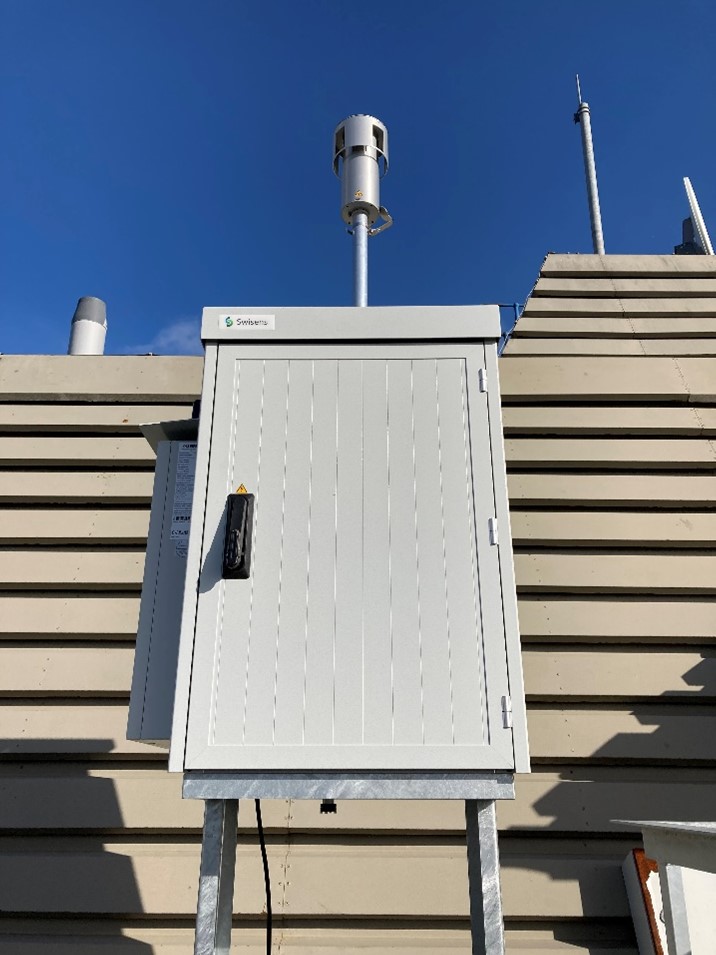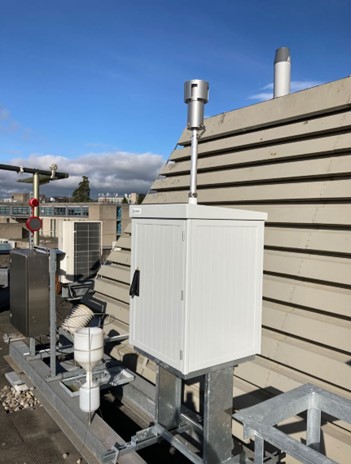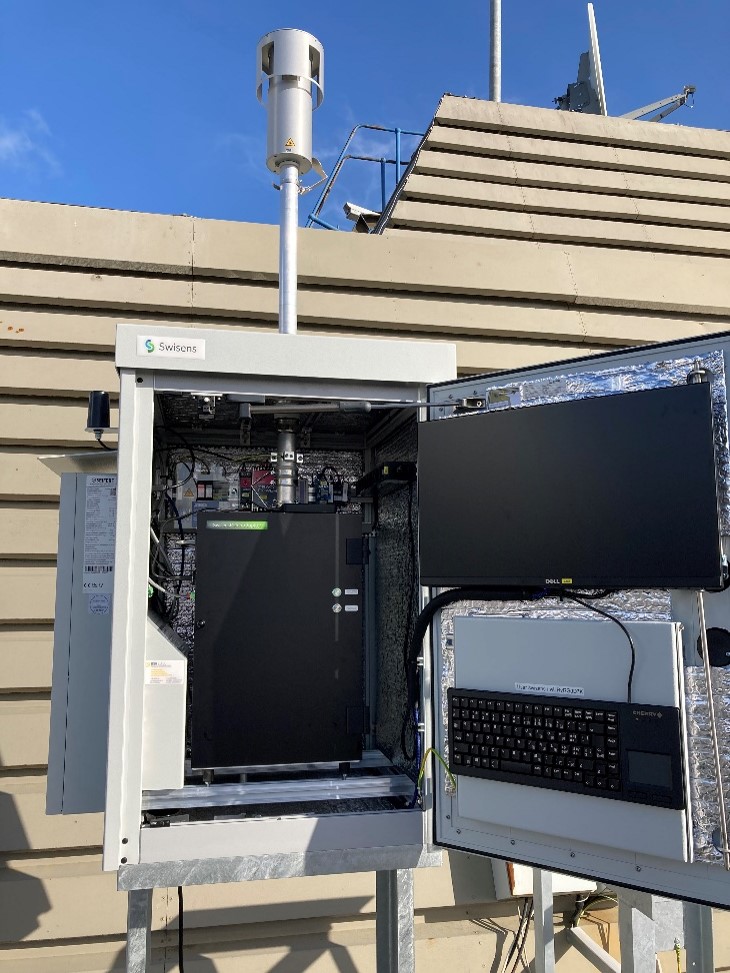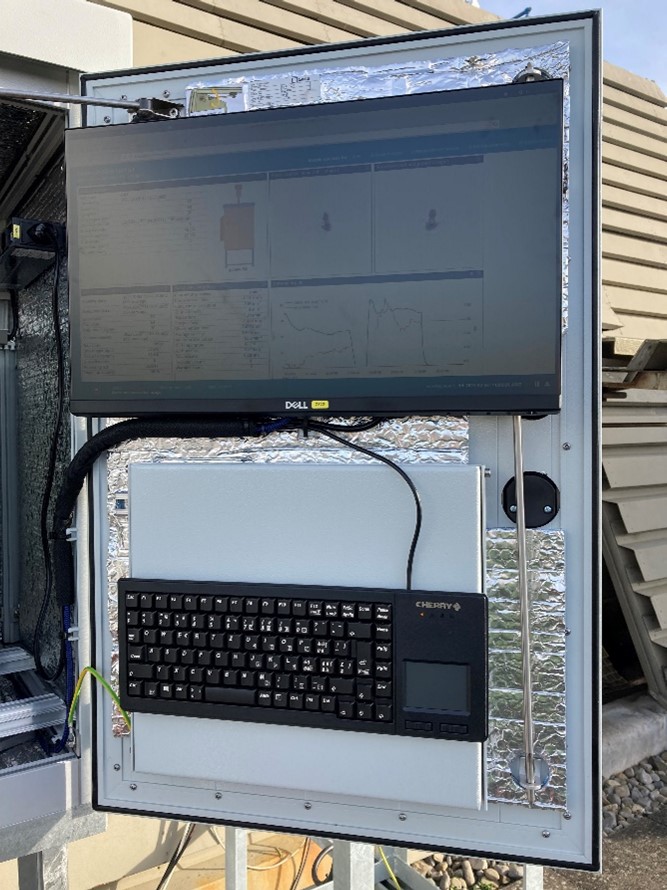As part of on-going co-operation between Met Éireann and Dublin City University (DCU), an innovative automated pollen measurement instrument based on ultra-fast laser technology has been installed on the roof of Met Éireann HQ in Glasnevin.
Fig. 1-2: The new “SwissensPoleno Jupiter” laser unit, installed on the roof of Met Éireann HQ in Glasnevin
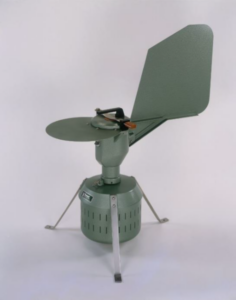
Fig. 3: The ‘traditional’ way of measuring pollen. This involves an air intake onto an adhesive film that is collected every 7 days, and then has to be analysed in a laboratory.
The current method of pollen measurement is based largely on technology developed in the 1950s, and is slow, cumbersome and labour intensive, providing results anything from three to nine days after the measurement was taken. To move on from this outdated methodology, new laser technologies can identify pollen particles instantaneously, allowing to develop a much more accurate forecast.
Up to 30% of the current European population have some form of pollen allergy (Lake et al., 2017), and allergy prevalence has significantly increased in the last few decades, mainly due to changes in climate. As a result, the number of allergy sufferers is expected to more than double by the year 2060 (Beggs et al., 2017; Lake et al., 2017)[1]. Ireland has the fourth highest rate of airborne allergy sufferers in the world, with it affecting between 25% and 40% of the population. This in turn has impacts on public and private health systems as well as socio-economic impacts on wider society.
Every year during pollen season, Met Éireann delivers a pollen forecast service on its website and app for three days ahead, however this is provided by the ©National Pollen and Aerobiology Research Unit, University of Worcester, UK. Having a highly accurate Irish-based forecast would allow asthma and allergy sufferers to target their use of antihistamines with considerable wellbeing and economic benefits.
With all this in mind, Met Éireann & Dr David O’Connor in DCU made a case for a national network of highly specialised, automated pollen measuring lasers.
The first milestone towards this network has just been realised with the installation of a “SwissensPoleno Jupiter” unit on the roof of Met Éireann HQ in Glasnevin. This state-of-the-art optical particle measurement laser can measure both pollen and a range of airborne pollutants and spores in the atmosphere. The unit is running alongside a more traditional unit so results can be easily compared. Artificial Intelligence (AI) within the unit can then identify, size and count the individual particles and submit the results into dispersion models if needed, almost instantaneously.
Sarah Gallagher, Head of the Observations Division in Met Éireann said: “Met Éireann are delighted to collaborate on this important project to improve both the monitoring and the prediction of pollen and bioaerosols for Ireland. This project will bring about an innovative step-change in the way we provide pollen services to the public and relevant sectors over the coming years.“
If phase 1 of the project (the “trail phase”) proves successful, phase 2 will involve a national roll-out of pollen monitoring units across the country. The plan is to have roughly fifteen sites across the country, strategically located, gathering information on different forms of pollen. Such a network could easily provide reliable data to dispersion modellers and vastly aide those who suffer from airborne allergies.
Fig. 4-5 : Inside of the new “SwissensPoleno Jupiter” laser unit, installed on the roof of Met Éireann HQ in Glasnevin”
[1] https://www.epa.ie/publications/research/environment–health/Research_Report_420.pdf
